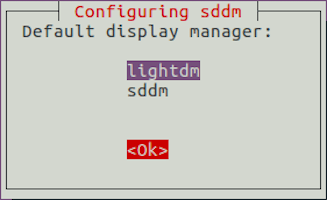How To Install KDE Plasma on Debian 12

In this tutorial, we will show you how to install KDE Plasma on Debian 12. KDE Plasma is a powerful and versatile desktop environment for Linux systems, offering a wide range of features and customization options. With its sleek interface, intuitive workflow, and extensive application ecosystem, KDE Plasma has become a popular choice among Linux users.
This article assumes you have at least basic knowledge of Linux, know how to use the shell, and most importantly, you host your site on your own VPS. The installation is quite simple and assumes you are running in the root account, if not you may need to add ‘sudo’ to the commands to get root privileges. I will show you the step-by-step installation of the KDE Plasma on Debian 12 (Bookworm).
Prerequisites
Before proceeding with the installation of KDE Plasma on Debian 12, ensure you meet the following requirements:
- A server running one of the following operating systems: Debian 12 (Bookworm).
- It’s recommended that you use a fresh OS install to prevent any potential issues.
- SSH access to the server (or just open Terminal if you’re on a desktop).
- An active internet connection. You’ll need an internet connection to download the necessary packages and dependencies.
- A user account with sudo privileges to execute administrative commands.
Install KDE Plasma on Debian 12 Bookworm
Step 1. To begin, open a terminal on your Debian 12 system by pressing Ctrl+Alt+T or by searching for “Terminal” in the application menu. Once the terminal is open, update your system’s package lists by running the following command:
sudo apt update sudo apt upgrade
Step 2. Installing KDE Plasma on Debian 12.
- Method 1: Install the KDE Plasma Desktop Package.
The first method for installing KDE Plasma on Debian 12 is by using the kde-plasma-desktop package. This package includes the core components of the KDE Plasma desktop environment, providing you with a complete and functional setup.
Now that your package list is updated, you can proceed with installing the kde-plasma-desktop package. In the terminal, run the following command:
sudo apt install kde-plasma-desktop
During the installation process, you will be prompted to select a display manager. A display manager is responsible for handling the login screen and starting the desktop environment. We recommend choosing sddm as your display manager for KDE Plasma.

SDDM (Simple Desktop Display Manager) is a lightweight and customizable display manager that integrates well with KDE Plasma. It offers a modern and intuitive login interface and provides smooth transitions between sessions.
Once the installation is complete, you need to reboot your system for the changes to take effect. In the terminal, run the following command:
reboot
After the reboot, you will be greeted by the login screen. Here, you can select the KDE Plasma desktop environment from the available options. Click on the desktop environment selector (usually located near the login prompt) and choose “Plasma” from the list. Enter your login credentials and press Enter to log in to your newly installed KDE Plasma desktop.
- Method 2: Install KDE Plasma Using Tasksel.
An alternative method for installing KDE Plasma on Debian 12 is by using the tasksel utility. Tasksel is a command-line tool that simplifies the process of installing predefined sets of packages, known as tasks. Here’s how to install KDE Plasma using tasksel:
sudo apt install tasksel
Once tasksel is installed, you can launch it by running the following command in the terminal:
sudo tasksel
This command will open the tasksel interface, presenting you with a list of available tasks that you can install.
Using the arrow keys, navigate through the list until you find the “KDE Plasma” option. Press the spacebar to select it, and then press Enter to proceed with the installation.
Tasksel will now download and install the KDE Plasma desktop environment along with a set of recommended KDE applications. This provides you with a more comprehensive KDE Plasma experience out of the box.
Step 3. Troubleshooting Common Installation Issues.
While the installation process for KDE Plasma on Debian 12 is generally straightforward, you may encounter some common issues. Let’s take a look at a few of them and how to troubleshoot them:
- Black Screen After Login
If you encounter a black screen after logging in to your KDE Plasma desktop, it could be due to missing graphics drivers. To resolve this issue, you may need to install the appropriate drivers for your graphics card.
- Missing KDE Applications
If you find that certain KDE applications are missing from your installation, you can easily install them using the apt command. For example, to install the Konsole terminal emulator and the Dolphin file manager, you can run the following commands:
sudo apt install konsole sudo apt install dolphin
You can search for other KDE applications using the apt search command followed by the application name or description. For example:
apt search "KDE text editor"
- Broken Package Errors
If you encounter broken package errors during the installation process, it means that there are unmet dependencies or conflicting packages. To resolve this issue, you can use the apt command with the --fix-broken option. Run the following command:
sudo apt --fix-broken install
This command will attempt to resolve the broken dependencies and fix the package errors. If the issue persists, you may need to manually remove the conflicting packages using the apt remove command followed by the package name.
Congratulations! You have successfully installed KDE Plasma. Thanks for using this tutorial to install the latest version of the KDE Plasma on Debian 12 Bookworm. For additional help or useful information, we recommend you check the official KDE Plasma website.